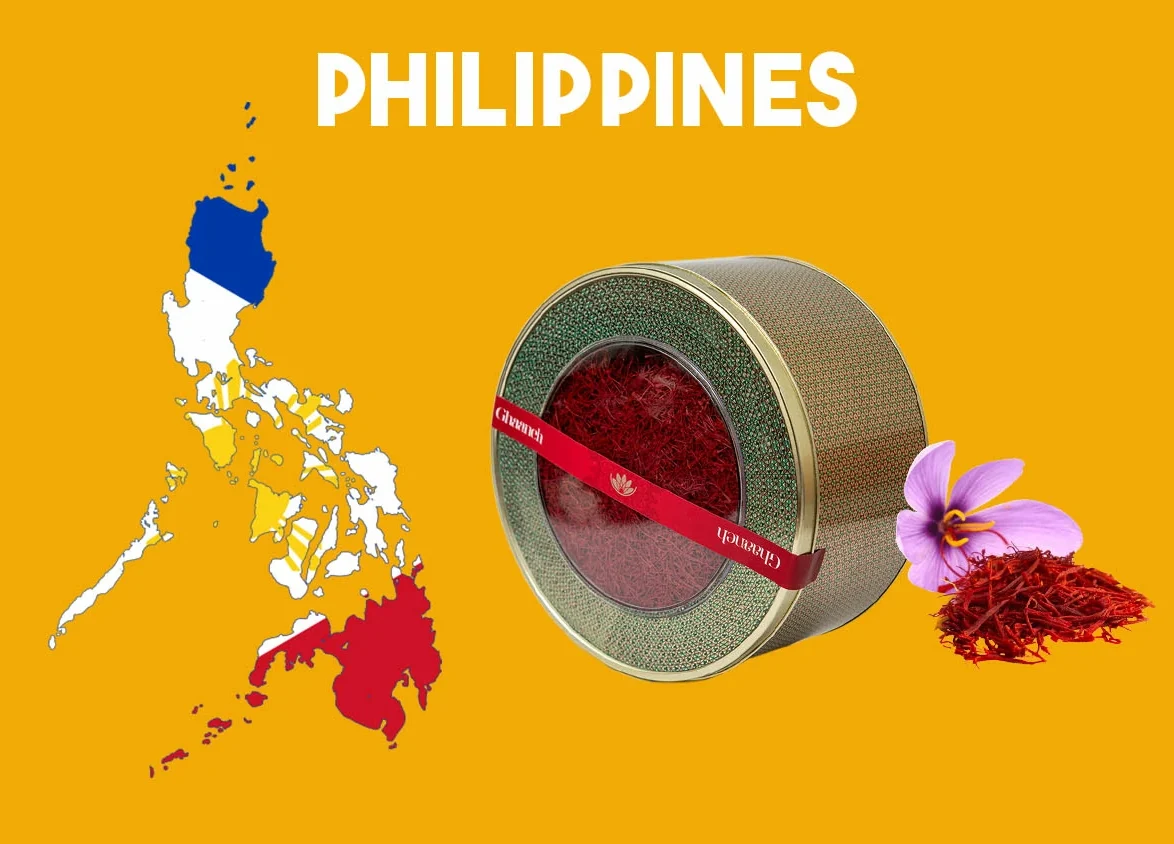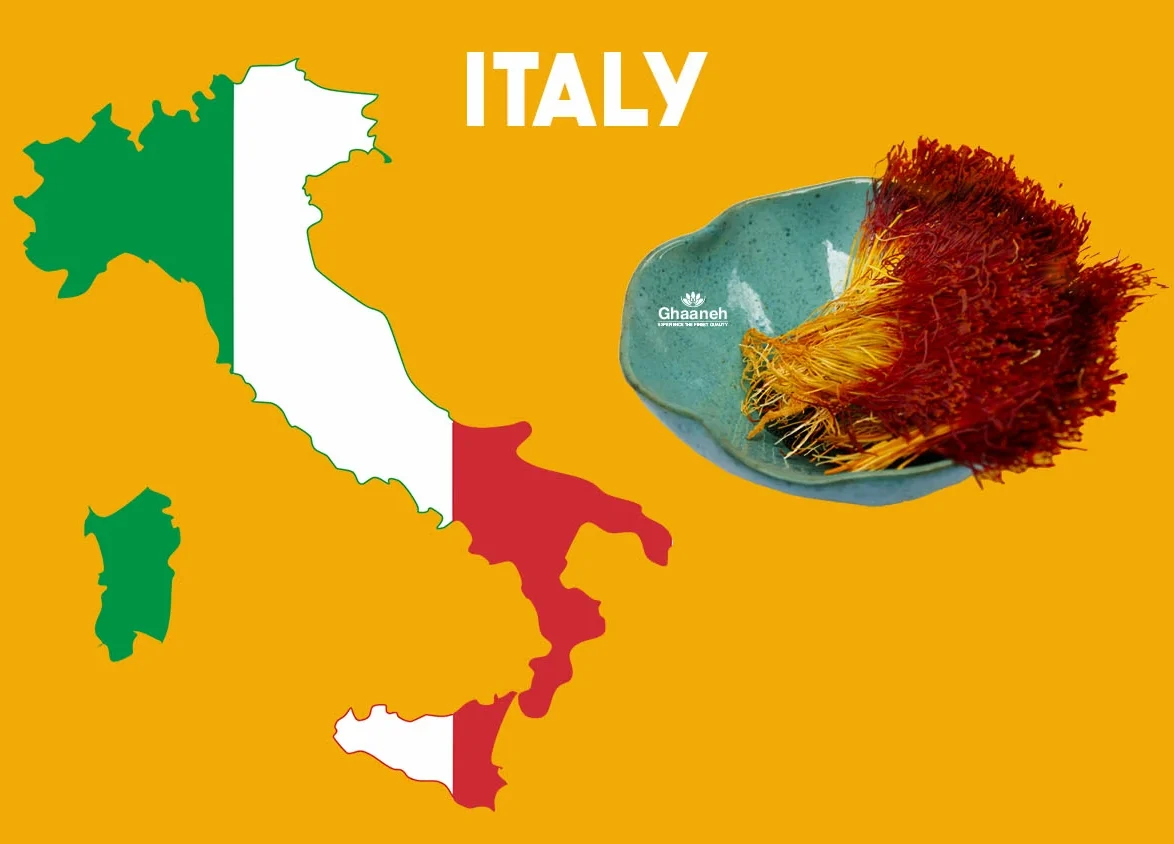Maybe you can plant saffron corms (bulbs or onions) even in your own garden, but if you want to plant saffron on a large scale and for economic purposes, you must follow some guidelines. Nonetheless, you have to limit expectations and be realistic, as only a special climate specifically in the north of Iran, Khorasan province, lets you have the best type of saffron threads (strands or technically stigmas) known as the red gold. Bellow, we give you 7 steps you need to take to grow the Red gold. Before, you need to consider the climatic requirements:
What type of climate is the best for saffron?
The cultivation of saffron in cold regions is better than that in tropical regions. If your living environment is such that in the very cold winter, at least two or four days a week, the temperature drops to zero and the water freezes, and you don’t have a killing hot summer (more than 42 C), then you can plant saffron in this area. A saffron-growing ideal temperature ranges from 60 to75°F (15-24°C) during the day and slightly cooler temperatures at night. humidity levels must be around 40-60%.
Now, let us start to review the steps you need to take to be a successful saffron grower.
1-The best land to grow saffron, yes but…
Choosing a proper land seems to be the most challenging part of saffron planting.
The suitable land for saffron cultivation must be fertile and have well-drained soil with some amount of organic matter. It should not be overshadowed by trees and vegetation. However, in some villages of Birjand and Ghaen, it is planted under the shade of barberry bushes and almond trees, which are less irrigated in summer, and this type of cultivation has its special conditions. Lands that are not exposed to very cold winds or very hot sunlight are the best areas for saffron cultivation.
2-Prepare the soil.
First, you should know that the most suitable soils are a mixture of loamy soil, sand, and organic compost. Crocus Sativus (technical term for saffron plant) is not able to thrive properly in clay soil. Also, the soil that contains rubble or weeds could lead to fruitless attemps
It is recommended that your soil should be calcareous and have a pH of about 6 to 7. In general, the saffron plant prefers calcareous over salty, poor, wet, and acidic lands. After soil analysis, the next step is the preparation of the soil.
Since irrigation and fertilizing in time will have a direct effect on the volume of the obtained product, from the end of winter to the beginning of spring, phosphorus, livestock, and potash fertilizers should be given to the land and the land should be plowed sufficiently.
If you have not planted saffron bulbs in the ground before, for the first year, you should plow the ground well from August to September to a depth of 40-50 centimeters, and in the next step, add 4 tons of rotten cow manure along with granulated potassium sulfate, 25 kg of superphosphate. Spread triple and 50 kg bentonite sulfur per thousand meters. Mix the soil with this fertilizer well using the cultivator machine. Then, level the soil surface so that it does not have any significant depressions or elevations.
3-Planting the saffron bulbs
The best planting time for saffron is late summer. Until blooming within 6-10 weeks, the corms are sleeping (summer dormancy)and the soil moisture is at its lowest level. In semi-tropical regions, you have time to cultivate saffron until the middle of October, and in tropical regions until the end of October, but in cold regions, you must have done your cultivation by the end of September. Summer dormancy occurs well in warm and dry weather.
Crocus corms should be healthy and away from any kind of pollution, mites, and fungus. For this purpose, it should be disinfected before transferring to the soil. Then, you need to choose your planting style.
Mound- or pit-type cultivation of saffron
This type of cultivating saffron is an old and traditional method in which they dig holes with a depth of 20 to 25 cm with a shovel, then put 3 to 15 saffron chives inside each hole and cover them with soil. They flatten the surface of the earth. The distance between each hole and the next hole is between 15 to 20 cm in one row and 25 to 30 cm in the side row. If you plan to plant saffron in a large area, heap cultivation is not recommended at all because the roots of the onions will compete with each other.
Ideal cultivation of saffron (row cultivation)
Ideal cultivation of saffron is the most modern method of doing the job, in which furrows are created in rows with a distance of 20 to 25 cm. One of the advantages of ideal saffron planting is that during the multiplication of saffron corms and rooting, the absorption of elements in the soil becomes easier and without competition for the plant. Other benefits of row cultivation of saffron are reducing the cost of fertilizing and spraying foliar, easier harvesting of saffron flowers, increasing farm efficiency, and reducing labor costs.
A Simple but forgettable note: plant corms pointy side up, if you want to have a crop!
4-Irrigation
Saffron is a water-deficient plant, but its crocus corms need moisture during its growth period. The growth period of saffron onion includes two stages of flowering in the fall season and multiplication of saffron onion in winter and spring. The necessary moisture of onion in this period is provided through seasonal rains. This issue does not mean that the saffron farm does not need irrigation! You should irrigate the farmland two to four times during the onion growing season. The first stage of watering saffron is November, which is done before the saffron flowering period. we will talk about the other times of irrigation in the 7th step.
Crust breaking after first irrigation
After the first watering and before the field blooms, the crusty surface of the land should be broken, so that the bulbs are not damaged. The best tool to do that is an agricultural tiller with horizontal blades. This will allow the flowers to be easily removed from the soil and the manure will be mixed with the soil and kill the newly grown weeds.
If you do not break the crusty soil of the land, the saffron crowns will come out of the soil unevenly and without order. This incident leads to the difficulty of the harvesting process and the relative reduction of the productivity of the saffron farm.
5-Caring for the plants
In addition to watering, your plants need care, especially since saffron can be attacked by all kinds of pests and vermin. The most precious onions in the world are a tasty food for rabbits, voles, mice, gophers, ticks, and saffron bulb mites. The saffron bulb mite is an 8 mm long bug that causes the plant to grow undersized.
On average, we should dig grooves or holes in different parts of the farm twice a month or once every 10 days and check the saffron bulbs to make sure they are healthy and not contaminated.
We use sulfur-granulated fertilizer to deal with ticks. Sulfur makes the soil more acidic and kills many pests, including mites. To benefit from the benefits of sulfur, we must spread sulfur at the rate of 30 kg per thousand meters and mix it with the soil before watering.
Sorry but you need to be ruthless toward rats!
Saffron corms are easy targets for different types of rodents especially rats during the winter months when food is scarce. You can use mouse traps, rat poisons, methane gas, and rice tablets to get rid of rats. The best and fastest way to kill rats is to use rice tablets and inject methane gas (household gas capsule) into the rat’s nest, in such a way that all the entrance and exit holes of the nest except for one hole are taken and operated with a gas hose. We inject gas into the nest. This method has shown excellent results in 99% of cases.
Another way to get rid of mice or other types of rodents is to plant corms in containers. Of course, this is not very effective when you have a large land. Some also cover the surface of your flower bed with tarpaulin or a wire mesh.
6-Harvesting the Saffron
Harvesting saffron depends on the time of irrigation and the climate of the region, but mainly in November, saffron begins to flower, and during the 20-30 days of the flowering season, you must pick saffron flowers every day.
To preserve the quality of saffron as much as possible, it is better to harvest when the flowers are in the form of buds or half open.
Harvesting saffron manually
This method is the common way of harvesting saffron. In this method, the number of workers varies according to the harvest year. per hectare, in the first year to 5 or 6 people; 10 people are needed in the second year and 15 people in the third and subsequent years.
Harvesting saffron with a flower picker
In this method, you can use all kinds of flower harvesting machines, such as backpacks, carriages, and Spanish models. The Spanish method is recommended for less dense land.
But the point is that this method is not yet accurately answered and in most areas, the method of harvesting by hand is used.
Start Processing saffron stigmas as soon as possible
Saffron threads should be separated from the saffron flowers immediately after picking because the pollen may stick to the surface of the stigma.
So, hurry up! if there is a big gap between the time of harvesting and the separation of the threads from the flowers, as the separation process is difficult, the stigmas are damaged and the quality of saffron is reduced. Where you want to cut the stigmas, depends on your target market. Once cutting them, put them in a dehydrator, and finally, store the dried saffron threads in an airtight container.
Caring for daughter bulbs for next year
The propagation stage of crocus corms begins after the flowering period in mid-autumn and continues until the end of May. In the propagation stage, the bulbs that gave us flowers this year (mother bulbs) disappear and are replaced by one or more new bulbs(daughter bulbs) that will give us flowers again next year in mid-autumn.
The mother saffron crocus corm, which has taken root in the soil since the beginning of the first watering and started to absorb nutrients from the soil, usually in the middle of February, its roots dry up, and even the mother onion itself because its food reserves are used to create daughter onions. It disappears and turns into a button under daughter bulbs. In other words, the mother onion sacrifices its life for the daughter. 1 to 3 times of irrigation, depending on weather, you need to help your saffron plants survive until its leaves are completely yellow in mid or late April. The second time of irrigation happens after 14 days of harvesting saffron from the end of November to the middle of December. If the amount of rainfall during the winter is not fifty millimeters in a period of rain, you should do the third and fourth stages of irrigation in March and April.
Don’t forget foliar spraying
Because the roots of the mother corms are destroyed from the middle of early February, it is obligatory to continue the process of feeding and developing the newly formed daughter onions through foliar spraying until late May until the complete yellowing of the saffron leaves.
In foliar spraying, we use macroelements with a higher potassium percentage (nitrogen, phosphorus, potassium) as well as microelements, as well as seaweed extract and amino acids.
Three points about spraying saffron:
– The minimum amount of foliar spraying is 3 times and you can do this process at most every week
– The best time for foliar spraying is from 10:00 to 3:00 PM on sunny and windless days
– The most important time for foliar spraying is from the middle of February to the end of May, but you can either do this process before the saffron leaves turn yellow.
Conclusion
Making money by growing the most expensive spice in the world is a brilliant idea, as there are lots of fantastic people who pay for memorable dishes. Saffron growers believe that you must be of fierce determination, because you are going to enter a high-stakes business in which you need a lot of patience and restlessness, facing a lot of potent rivals throughout the world. Saffron plantation is a labor-intensive process. This is why it is the most precious spice in the world. Different steps of growing saffron, from choosing the proper land to harvesting saffron crops need meticulous work to have the best threads of saffron. To contribute to adding an exotic flavor and aroma to your favorite dishes, Ghaaneh Brand provides the saffron yield from experienced farmers who follow planting instructions from experts.
FAQs
What is the best soil to plant saffron?
The most suitable soil for saffron production is a mixture of loamy soil, sand, and organic compost. with no rubble or weeds. Saffron crocus bulbs prefer calcareous soil with a pH of about 6 to 7 over salty, poor, wet, and acidic lands.
When should we plant saffron onions?
The saffron plantation must start in late summer.
What is our most important work on the farmland after picking saffron flowers?
Depending on the climate, you should water your land 1 to 3 and also spray foliar on saffron leaves until April.









Nothing compares to saffron powder. it’s easy and it does have a great coloring effect. Loved it, thanks to ghaaneh saffron.
I was curios about saffron and i landed in your shop (looks amazing btw), I have never made an online order for saffron, so when I made my first attempt and trusted ghaaneh saffron, they truly delivered. I will certainly buy again when I run out of saffron. THANKS
Excellent product, i had the pleasure to enjoy this saffron with a decent price! kudos to you guys.
Oh to have the Persian saffron in your rice dish is a blessing! thank you ghaaneh for this amazing delivery.
Never had such a good online shop experience, i tell you from the moment i contacted you guys to the second you delivered to my doorstep, it all was smooth! thanks and will be buying again.